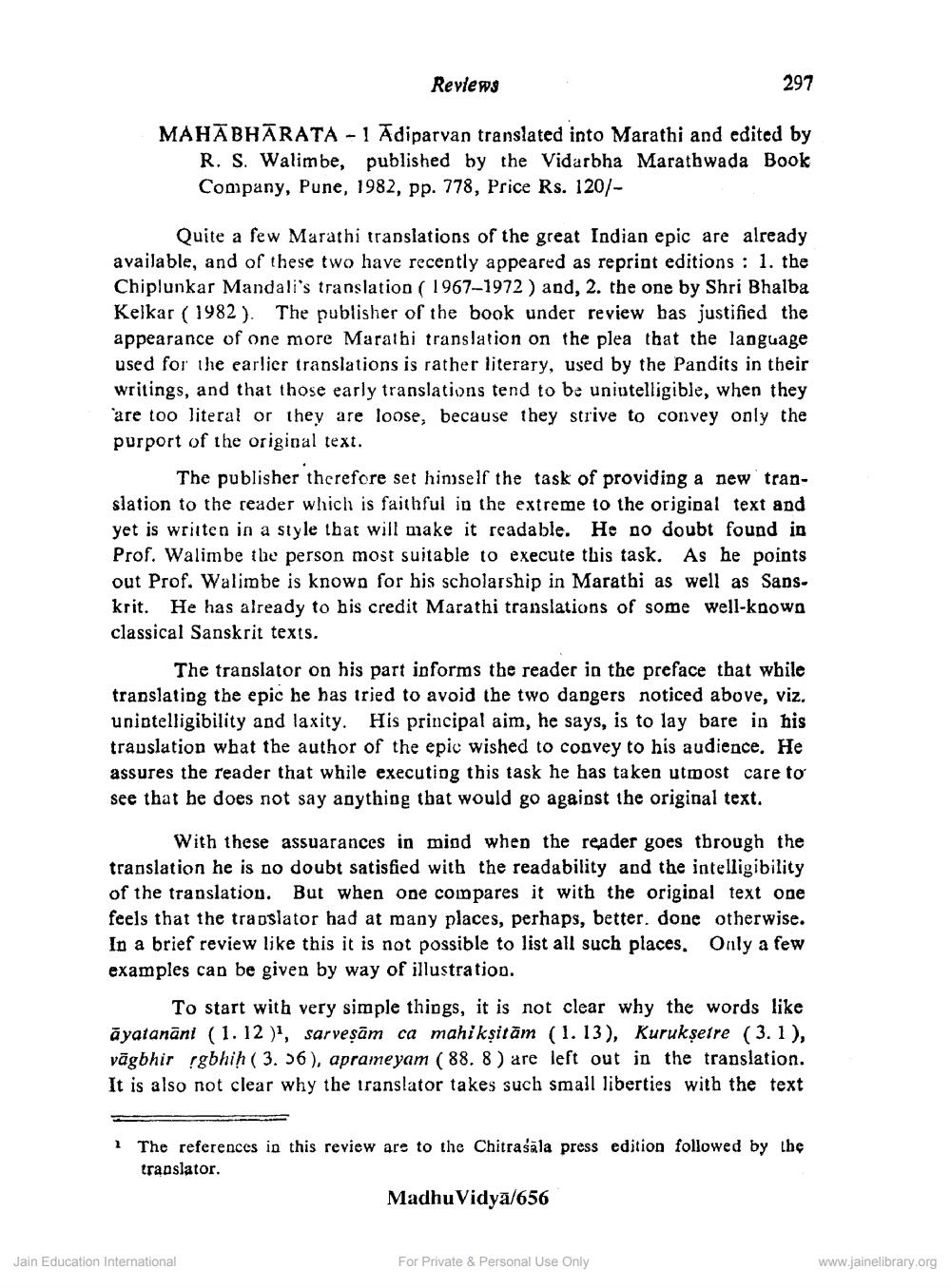________________
Reviews
297
MAHĀBHĀRATA - 1 Adiparvan translated into Marathi and edited by
R. S. Walimbe, published by the Vidarbha Marathwada Book Company, Pune, 1982, pp. 778, Price Rs. 120/
Quite a few Marathi translations of the great Indian epic are already available, and of these two have recently appeared as reprint editions : 1. the Chiplunkar Mandali's translation ( 1967-1972 ) and, 2. the one by Shri Bhalba Kelkar (1982). The publisher of the book under review has justified the appearance of one more Marathi translation on the plea that the language used for the earlier translations is rather literary, used by the Pandits in their writings, and that those early translations tend to be uniutelligible, when they are too literal or they are loose, because they strive to convey only the purport of the original text.
The publisher therefore set himself the task of providing a new translation to the reader which is faithful in the extreme to the original text and yet is written in a style that will make it readable. He no doubt found in Prof. Walimbe the person most suitable to execute this task. As he points out Prof. Walimbe is known for his scholarship in Marathi as well as Sans. krit. He has already to his credit Marathi translations of some well-known classical Sanskrit texts.
The translator on his part informs the reader in the preface that while translating the epic he has tried to avoid the two dangers noticed above, viz. unintelligibility and laxity. His principal aim, he says, is to lay bare in his trauslation what the author of the epic wished to convey to his audience. He assures the reader that while executiog this task he has taken utmost care to see that he does not say anything that would go against the original text.
With these assuarances in mind when the reader goes through the translation he is no doubt satisfied with the readability and the intelligibility of the translation. But when one compares it with the original text one feels that the traoslator had at many places, perhaps, better. done otherwise. In a brief review like this it is not possible to list all such places. Only a few examples can be given by way of illustration.
To start with very simple things, it is not clear why the words like āyatanāni (1.12), sarveşām ca mahikṣitām (1.13), Kurukseire (3.1), vāgbhir Igbhih (3. 56), aprameyam ( 88.8) are left out in the translation. It is also not clear why the translator takes such small liberties with the text
1
The references in this review are to the Chitraśāla press edition followed by the translator.
Madhu Vidya/656
Jain Education International
For Private & Personal Use Only
www.jainelibrary.org




